NPs Basic Information

|
Name |
Orientin
|
| Molecular Formula | C21H20O11 | |
| IUPAC Name* |
2-(3,4-dihydroxyphenyl)-5,7-dihydroxy-8-[(2S,3R,4R,5S,6R)-3,4,5-trihydroxy-6-(hydroxymethyl)oxan-2-yl]chromen-4-one
|
|
| SMILES |
C1=CC(=C(C=C1C2=CC(=O)C3=C(O2)C(=C(C=C3O)O)[C@H]4[C@@H]([C@H]([C@@H]([C@H](O4)CO)O)O)O)O)O
|
|
| InChI |
InChI=1S/C21H20O11/c22-6-14-17(28)18(29)19(30)21(32-14)16-11(26)4-10(25)15-12(27)5-13(31-20(15)16)7-1-2-8(23)9(24)3-7/h1-5,14,17-19,21-26,28-30H,6H2/t14-,17-,18+,19-,21+/m1/s1
|
|
| InChIKey |
PLAPMLGJVGLZOV-VPRICQMDSA-N
|
|
| Synonyms |
Orientin; 28608-75-5; Lutexin; Luteolin 8-C-glucoside; Orientine; Luteolin-8-glucoside; 4H-1-Benzopyran-4-one, 2-(3,4-dihydroxyphenyl)-8-beta-D-glucopyranosyl-5,7-dihydroxy-; 8-beta-D-glucosylluteolin; IAX93XCW6C; Luteolin 8-glucoside; CHEBI:7781; 2-(3,4-Dihydroxyphenyl)-8-beta-D-glucopyranosyl-5,7-dihydroxy-4H-1-benzopyran-4-one; 2-(3,4-dihydroxyphenyl)-5,7-dihydroxy-8-((2S,3R,4R,5S,6R)-3,4,5-trihydroxy-6-(hydroxymethyl)tetrahydro-2H-pyran-2-yl)-4H-chromen-4-one; 2-(3,4-dihydroxyphenyl)-5,7-dihydroxy-8-[(2S,3R,4R,5S,6R)-3,4,5-trihydroxy-6-(hydroxymethyl)oxan-2-yl]chromen-4-one; C10114; Orientin (Flavone); 8-glucosylluteolin; Luteolin-8-C-glucoside; 2-(3,4-dihydroxyphenyl)-8-beta-D-glucopyranosyl-5,7-dihydroxy-4H-chromen-4-one; 4H-1-Benzopyran-4-one, 2-(3,4-dihydroxyphenyl)-8-.beta.-D-glucopyranosyl-5,7-dihydroxy-; 2-(3,4-dihydroxyphenyl)-5,7-dihydroxy-8-[(2S,3R,4R,5S,6R)-3,4,5-trihydroxy-6-(hydroxymethyl)oxan-2-yl]-4H-chromen-4-one; UNII-IAX93XCW6C; NSC-133101; USE; MFCD00017432; 8-.beta.-D-Glucopyranosyl-3',4',5,7-tetrahydroxyflavone; SCHEMBL25942; Orientin, analytical standard; MASSBANK PR020063; CHEMBL520866; Orientin, >=97% (HPLC); BDBM84982; DTXSID60182790; Luteolin 8-C-b-D-glucopyranoside; NIAID AIDS# 026706; HMS3886J16; HY-N0405; ZINC4098560; 8-.BETA.-D-GLUCOSYLLUTEOLIN; s9099; AKOS015896746; CCG-269214; NCGC00482848-01; AC-34280; AS-73888; J17.734B; LUTEOLIN 8-C-.BETA.-GLUCOPYRANOSIDE; CS-0008937; O0503; LUTEOLIN 8-C-.BETA.-D-GLUCOPYRANOSIDE; Orientin 100 microg/mL in Acetonitrile:Water; 608O755; A819507; EN300-19631775; Orientin, primary pharmaceutical reference standard; Q421676; 8-b-D-Glucopyranosyl-3',4',7'-tetrahydroxyflavone; Q-100362; 2-(3,4-DIHYDROXYPHENYL)-8-.BETA.-D-GLUCOPYRANOSYL-5,7-DIHYDROXY-4H-CHROMEN-4-ONE; (1S)-1,5-ANHYDRO-1-(2-(3,4-DIHYDROXYPHENYL)-5,7-DIHYDROXY-4-OXO-4H-CHROMEN-8-YL)-D-GLUCITOL; 2-(3,4-DIHYDROXYPHENYL)-5,7-DIHYDROXY-8-(.BETA.-D-GLUCOPYRANOSYL)-4H-1-BENZOPYRAN-4-ONE; 2-(3,4-dihydroxyphenyl)-5,7-dihydroxy-8-[(2S,3R,4R,5S,6R)-3,4,5-trihydroxy-6-(hydroxymethyl)tetrahydropyran-2-yl]chromen-4-one; 2-(3,4-DIHYDROXYPHENYL)-8-.BETA.-D-GLUCOPYRANOSYL-5,7-DIHYDROXY-4H-1-BENZOPYRAN-4-ONE; 2-[3,4-bis(oxidanyl)phenyl]-8-[(2~{S},3~{R},4~{R},5~{S},6~{R})-6-(hydroxymethyl)-3,4,5-tris(oxidanyl)oxan-2-yl]-5,7-bis(oxidanyl)chromen-4-one; 5281675; 2-(3,4-dihydroxyphenyl)-5,7-dihydroxy-8-[(2S,3R,4R,5S,6R)-3,4,5-trihydroxy-6-(hydroxymethyl)oxan-2-yl]chromen-4-one; 8-(.BETA.-D-GLUCOPYRANOSYL)-2-(3,4-DIHYDROXYPHENYL)-5,7-DIHYDROXY-4H-1-BENZOPYRAN-4-ONE; D-GLUCITOL, 1,5-ANHYDRO-1-C-(2-(3,4-DIHYDROXYPHENYL)-5,7-DIHYDROXY-4-OXO-4H-1-BENZOPYRAN-8-YL)-, (1S)-
|
|
| CAS | 28608-75-5 | |
| PubChem CID | 5281675 | |
| ChEMBL ID | CHEMBL520866 |
*Note: the IUPAC Name was collected from PubChem.
Chemical Classification: |
|
|
|---|
——————————————————————————————————————————
NPs Species Source
| Endophyte ID | Endophyte Name | Family | Genus | Taxonomy ID | GenBank ID | Closest GenBank ID | Reference | |
|---|---|---|---|---|---|---|---|---|
| Endophyte ID | Endophyte Name | Family | Genus | Taxonomy ID | GenBank ID | Closest GenBank ID | Reference |
NPs Biological Activity
| Bioactivity Name | Target ID | Target Name | Target Type | Target Organism | Target Organism ID | Potency of Bioactivity | Activity Type | Value | Unit | Endophyte ID | Endophyte Name | |
|---|---|---|---|---|---|---|---|---|---|---|---|---|
| Bioactivity Name | Target ID | Target Name | Target Type | Target Organism | Target Organism ID | Potency of Bioactivity | Activity Type | Value | Unit | Endophyte ID | Endophyte Name |
NPs Physi-Chem Properties
| Molecular Weight: | 448.4 | ALogp: | -0.2 |
| HBD: | 8 | HBA: | 11 |
| Rotatable Bonds: | 3 | Lipinski's rule of five: | Rejected |
| Polar Surface Area: | 197.0 | Aromatic Rings: | 4 |
| Heavy Atoms: | 32 | QED Weighted: | 0.255 |
——————————————————————————————————————————
NPs ADMET Properties*
ADMET: Absorption
| Caco-2 Permeability: | -6.293 | MDCK Permeability: | 0.00000509 |
| Pgp-inhibitor: | 0.007 | Pgp-substrate: | 0.99 |
| Human Intestinal Absorption (HIA): | 0.912 | 20% Bioavailability (F20%): | 0.954 |
| 30% Bioavailability (F30%): | 1 |
——————————————————————————————————————————
ADMET: Distribution
| Blood-Brain-Barrier Penetration (BBB): | 0.013 | Plasma Protein Binding (PPB): | 88.77% |
| Volume Distribution (VD): | 0.842 | Fu: | 14.28% |
——————————————————————————————————————————
ADMET: Metabolism
| CYP1A2-inhibitor: | 0.199 | CYP1A2-substrate: | 0.039 |
| CYP2C19-inhibitor: | 0.02 | CYP2C19-substrate: | 0.048 |
| CYP2C9-inhibitor: | 0.071 | CYP2C9-substrate: | 0.241 |
| CYP2D6-inhibitor: | 0.028 | CYP2D6-substrate: | 0.158 |
| CYP3A4-inhibitor: | 0.058 | CYP3A4-substrate: | 0.011 |
——————————————————————————————————————————
ADMET: Excretion
| Clearance (CL): | 5.439 | Half-life (T1/2): | 0.833 |
——————————————————————————————————————————
ADMET: Toxicity
| hERG Blockers: | 0.126 | Human Hepatotoxicity (H-HT): | 0.169 |
| Drug-inuced Liver Injury (DILI): | 0.98 | AMES Toxicity: | 0.824 |
| Rat Oral Acute Toxicity: | 0.047 | Maximum Recommended Daily Dose: | 0.01 |
| Skin Sensitization: | 0.903 | Carcinogencity: | 0.039 |
| Eye Corrosion: | 0.003 | Eye Irritation: | 0.508 |
| Respiratory Toxicity: | 0.071 |
——————————————————————————————————————————
*Note: the ADMET properties was calculated by ADMETlab 2.0. Reference: PMID: 33893803.
Similar Compounds*
Compounds similar to EMNPD with top10 similarity:
| Similar NPs | Similar Drugs | ||||||
|---|---|---|---|---|---|---|---|
| NPs ID | NPs 2D Structure | Similarity Score | TTD ID | Drug 2D Structure | Similarity Score | ||
| ENC001532 | 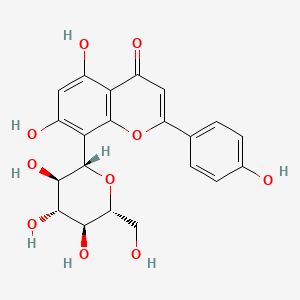 |
0.792 | D04AIT |  |
0.495 | ||
| ENC001572 | 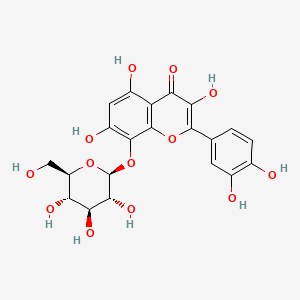 |
0.627 | D0K8KX | 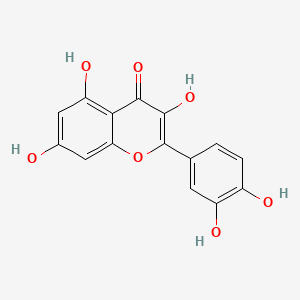 |
0.427 | ||
| ENC004734 | 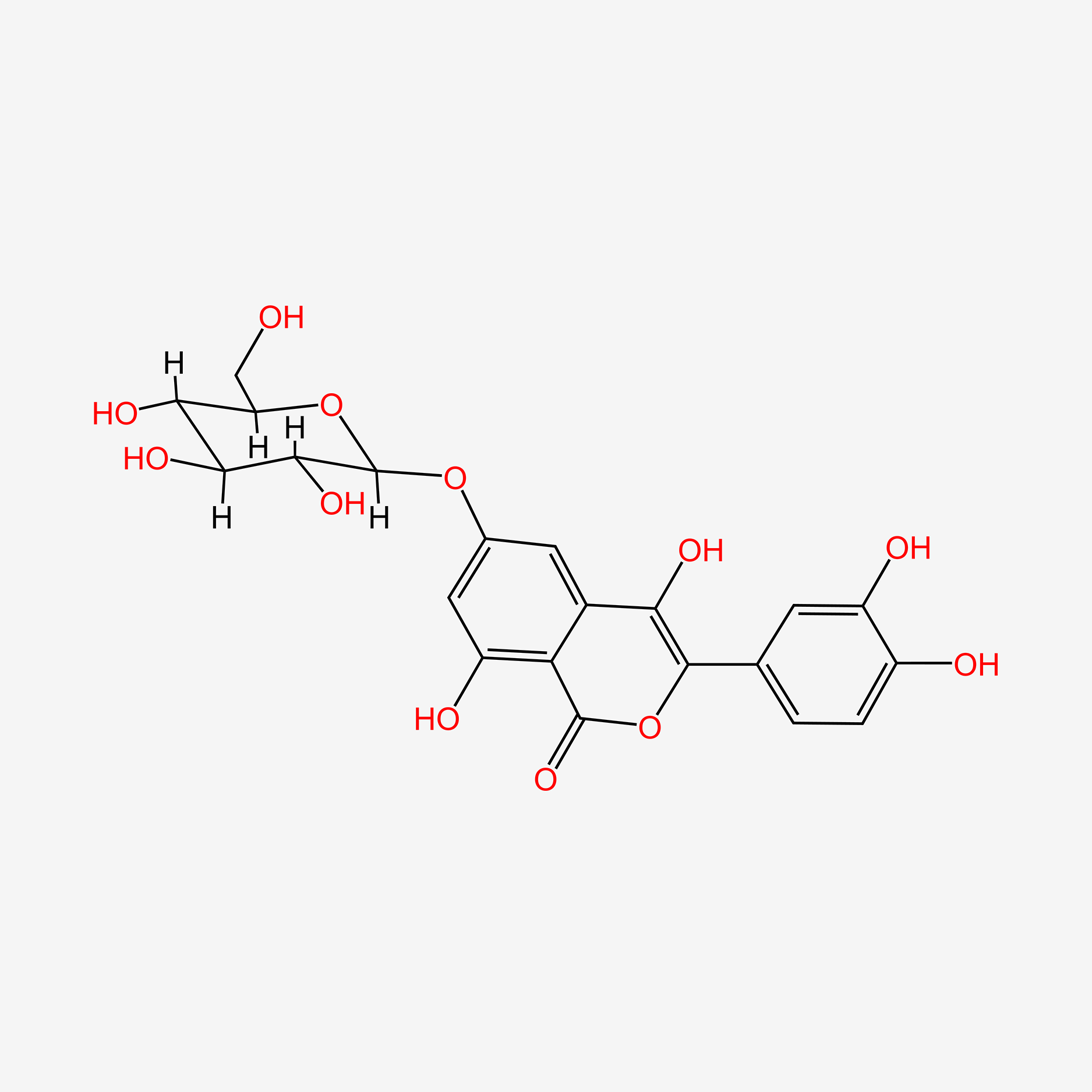 |
0.624 | D0TC7C |  |
0.399 | ||
| ENC002201 |  |
0.512 | D08DFX |  |
0.349 | ||
| ENC001534 | 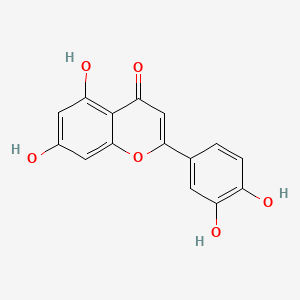 |
0.495 | D0AZ8C |  |
0.331 | ||
| ENC001546 | 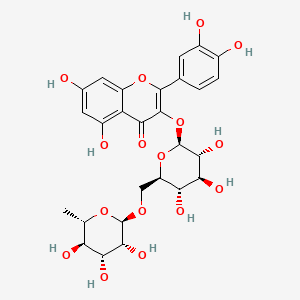 |
0.457 | D01TNW | 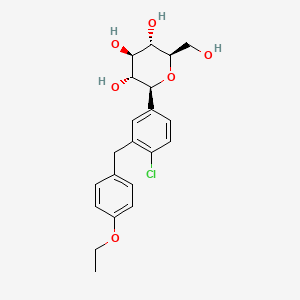 |
0.331 | ||
| ENC004475 | 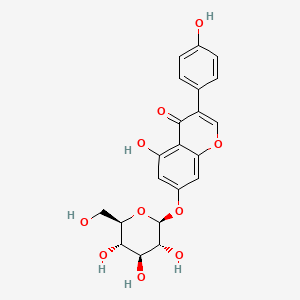 |
0.454 | D0I9HF |  |
0.323 | ||
| ENC001529 | 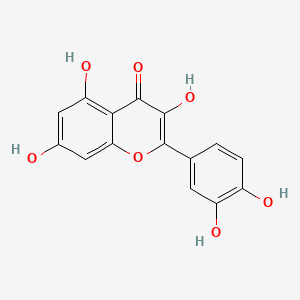 |
0.427 | D06GCK |  |
0.322 | ||
| ENC004797 |  |
0.402 | D06ALD | 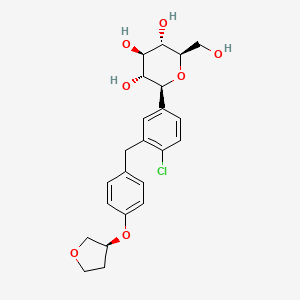 |
0.316 | ||
| ENC005391 | 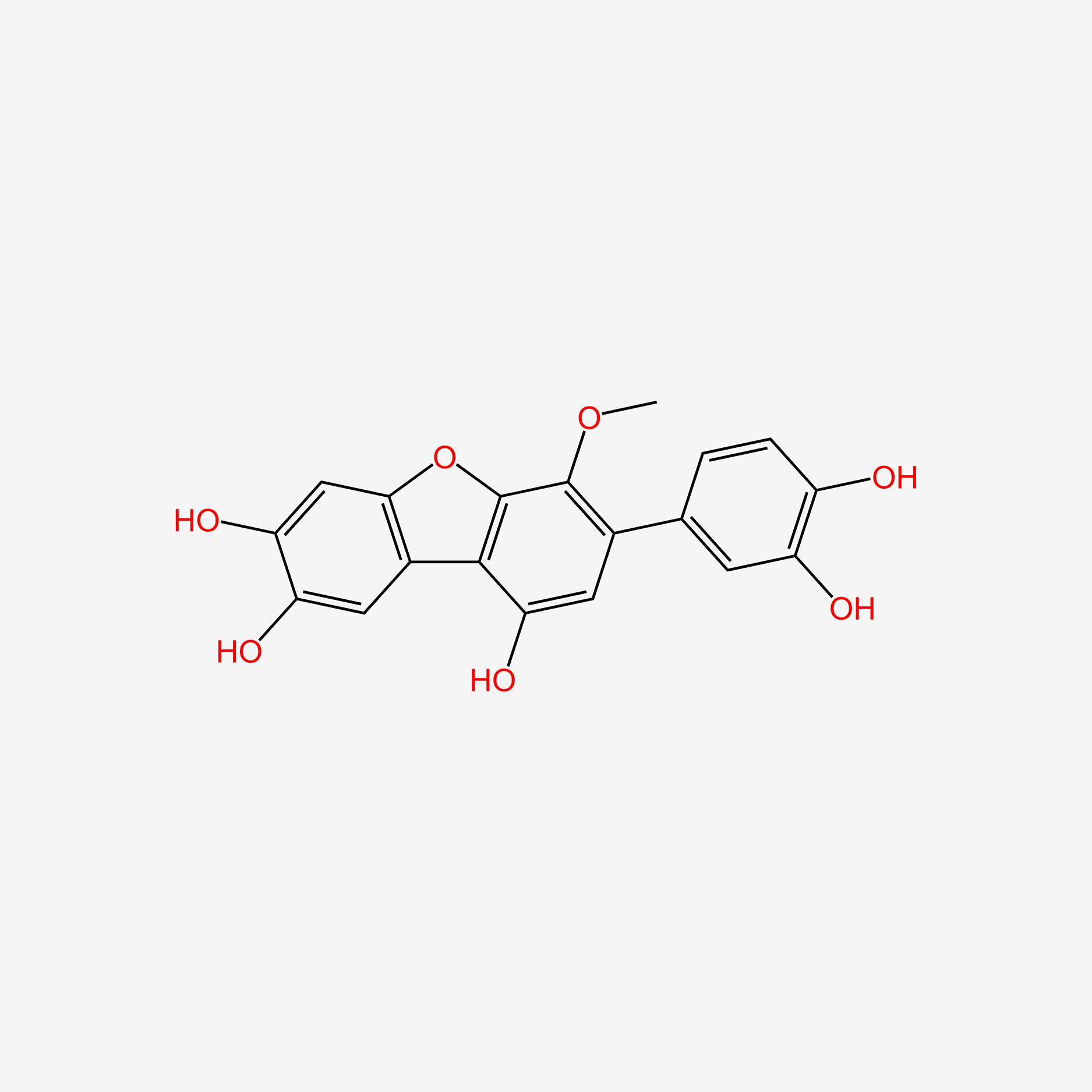 |
0.383 | D06BQU |  |
0.315 | ||